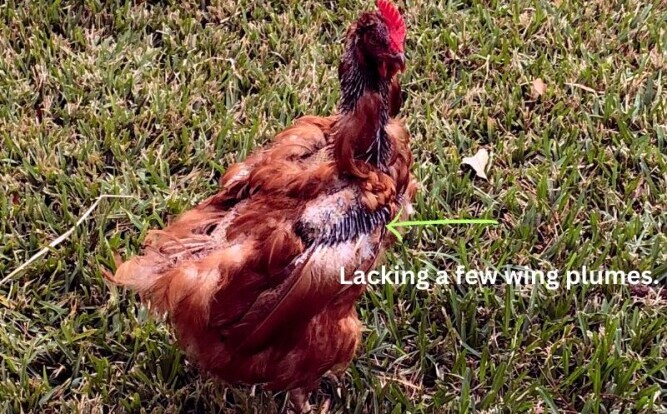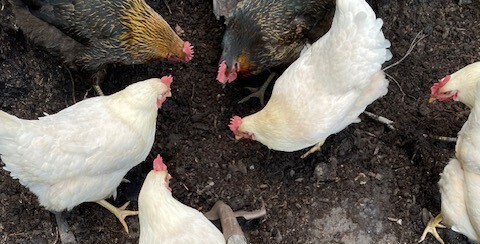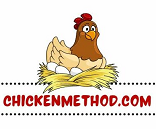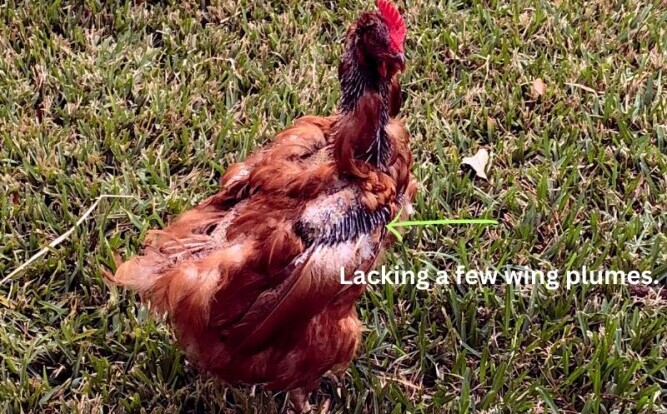
If you are a first-time chicken owner, the first time you see feathers falling off your chickens, you might go into panic mode, but don’t worry. It’s probably just molting season.
Even when you are used to molting, you can’t help feeling sorry for the little birds.
However, molting is a natural process where chickens shed their old feathers and grow new ones. Sure, it sounds simple, but it’s energy-intensive. Imagine trying to recover fom a mild ilness while you’re running a marathon—that’s kind of what molting is like for chickens.
During the molt, chickens’ nutritional needs change. They need extra nutrients to support feather regrowth and maintain their health. If their diet isn’t adjusted, you might see a drop in egg production and overall vitality. Just as baby chicks have special needs, so do molting chickens.
To help your flock through the molting phase, it’s crucial to understand the basics of molt nutrition. This includes proteins, vitamins, and minerals that play a significant role in feather regrowth. Providing a balanced diet isn’t just about adding more feed; it’s about adding the right types of feed.
A balanced diet includes a mix of proteins, vitamins, and minerals specifically tailored for molting chickens. Proteins are the building blocks for new feathers, while vitamins and minerals like A, D, E, calcium, and phosphorus support various bodily functions and help with the stress of molting.
So, if you notice your chickens looking a little scruffy, they probably need more than just their regular feed. Understanding and providing the right nutrition can make a world of difference in how they molt and recover.
Nutrients Needed for Chickens During Molting Factor
Proteins are critical when it comes to molting. Think of them as the building blocks your chickens need to create new, strong feathers. During molting, their body’s demand for protein shoots up because proteins are essential for feather regrowth and repair.
Extra protein is key during this period. Without it, your chickens might struggle with feather regrowth, and their overall health can take a hit. If their diet is lacking in protein, you might notice them looking patchy and their energy levels dipping.
Adding more protein to your chickens’ diet can help them molt more efficiently. Great sources of protein include mealworms, black soldier fly larvae, and fish meal.
If you prefer something plant-based, soybeans and peas are solid options. You can also look for commercial feeds formulated specifically for molting, which usually have a higher protein content.
Here’s the thing though; we all know what the most complete and easily assimilable protein (besides blood) is. It’s eggs! The ammino acid balance in eggs is almost perfect. Scramble some up and watch your chickens dive in.
There’s no need to worry about your girls becoming cannibalistic because scrambled eggs, crushed hardboiled eggs, and fried eggs don’t look anything like a fresh egg in the shell. They won’t know what they are eating, only that it is yummy!
Let’s talk about earthworms. If you have a pile of compost, or composted dirt that is full of worms, turn it over for the girls. They will go bonkers for it. And it will make you laugh out loud to see them compete for the worms. Check it out…

Sure, they get in the way, but what fun!
To mix things up and keep your chickens interested, try alternating between different protein sources. Balance is vital, but variety can also keep mealtime exciting for your flock.
If you give them meat, be sure to chop it up so they can eat it easily. Again, cooked chicken doesn’t encourage cannibalism for the same reason scrambled eggs do not.
Proper protein intake not only aids feather regrowth but also helps maintain their energy and overall health during this demanding phase.
Vitamins and Minerals Boost the Molting Process Naturally
When your chickens are molting, not only do they need extra protein, but vitamins and minerals also play a crucial role. Vitamins A, D, and E are particularly beneficial during this period.
Vitamin A supports skin and feather health, Vitamin D aids in calcium absorption, and Vitamin E acts as an antioxidant, reducing stress and promoting overall well-being.
Minerals like calcium, phosphorus, and selenium are equally important. Calcium isn’t just for eggshells; it supports feather strength and overall bone health.
Phosphorus works in tandem with calcium to keep bones healthy and helps with energy metabolism. Selenium, though needed in small amounts, is vital for reducing oxidative stress, which can be high during molting.
Feeding your chickens a balanced diet with these vitamins and minerals can naturally bolster their molting process.
Leafy greens, carrots, and squash are rich in Vitamin A. For Vitamin D, consider allowing your chickens some sunlight or adding fish liver oil to their diet. Vitamin E can be found in spinach, sunflower seeds, and broccoli.
On the mineral side, crushed oyster shells or limestone can provide the extra calcium. Phosphorus can be supplied by grains like corn and wheat. Selenium can be introduced through certain feeds or supplements, but be cautious—too much can be toxic.
Balancing these nutrients in your chickens’ diet can make a big difference. Not only does it help them get through the molting phase faster, but it also keeps them healthy and strong, setting them up for better days once the molting is over.
A Word of Caution
While it’s a good idea to provide extra supplementation through the molting period, it is equally important to back off when the process completes. Too much protein can be hard on chickens’ kidneys, and your birds get enough nutrients from regular feed during non-molting periods so you won’t need extra supplementation.
And that’s it!
Tell me how you make out this year with the molt. Your comments (below) are interesting to me and can help others with similar issues.
Take care.
Dave
Chickenmethod.com

